TPC Report
Irakli ChakaberiaCollaboration Meeting at Krakow
22 August 2019
- iTPC has been fully installed;
- TPC data reconstruction worked out of the box (box prepared during Run-18);
- TPC is whole again - in every sence;
- The following slides concern TPC as a single detector.
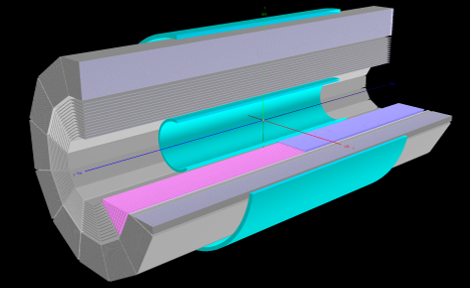
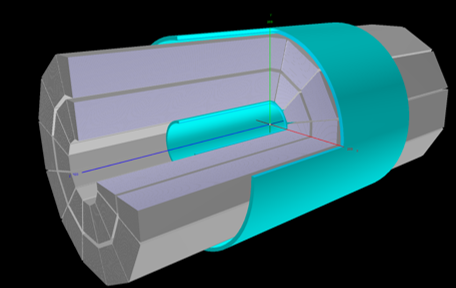
- iTPC integration into TpcRS simulation was done last year;
- This version also came with improvements for the TPC response simulation;
- Some side-effects were cougth by the nightly tests;
- To address these side-effects the changes were studied to the smallest detail and issues addressed and discrepencies explained; [Reported at S&C]
- All the TpcRS improvements also went into the SL17d_embed package (modulos iTPC of course).
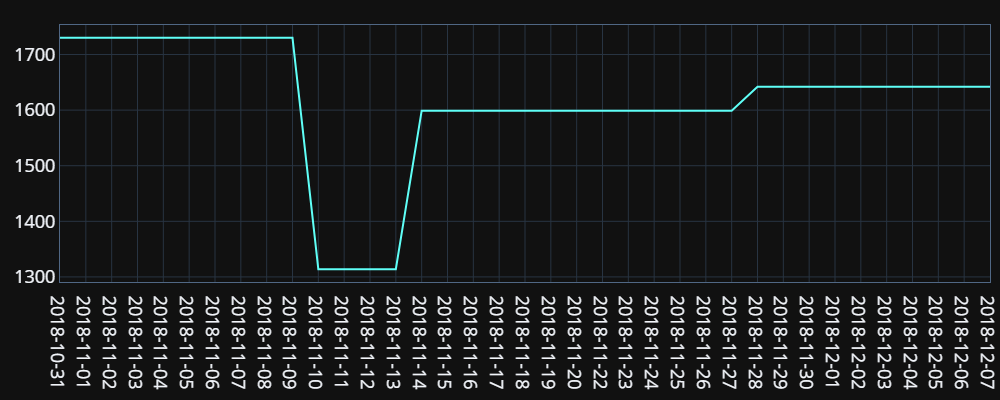
- Run-19 saw large dedicated time for cosmics;
- Request was for at least 500 thousand events in each sector both magnetic field polarities;
- Alignment of the newly installed iTPC sectors with the rest of the TPC is an important step;
- Cosmic data also allows us to conveniently look at the pT resolution using two parts of a single cosmic ray.
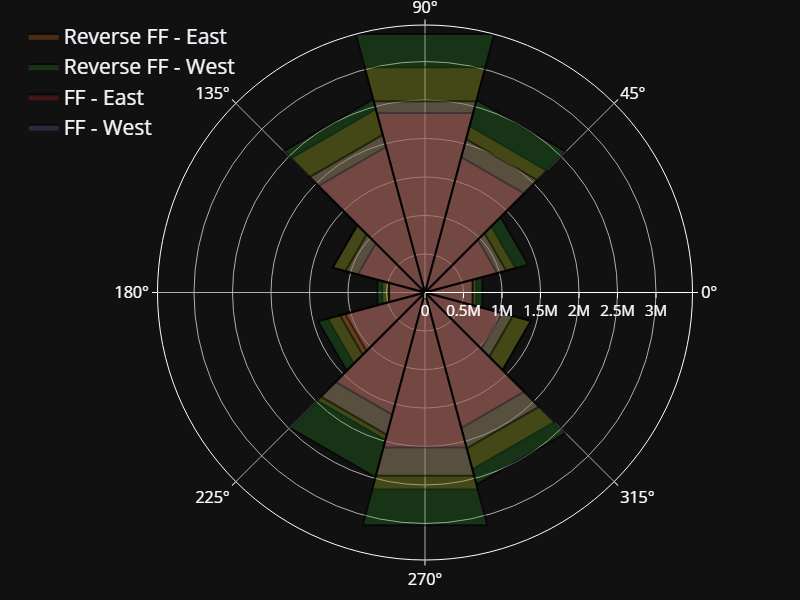
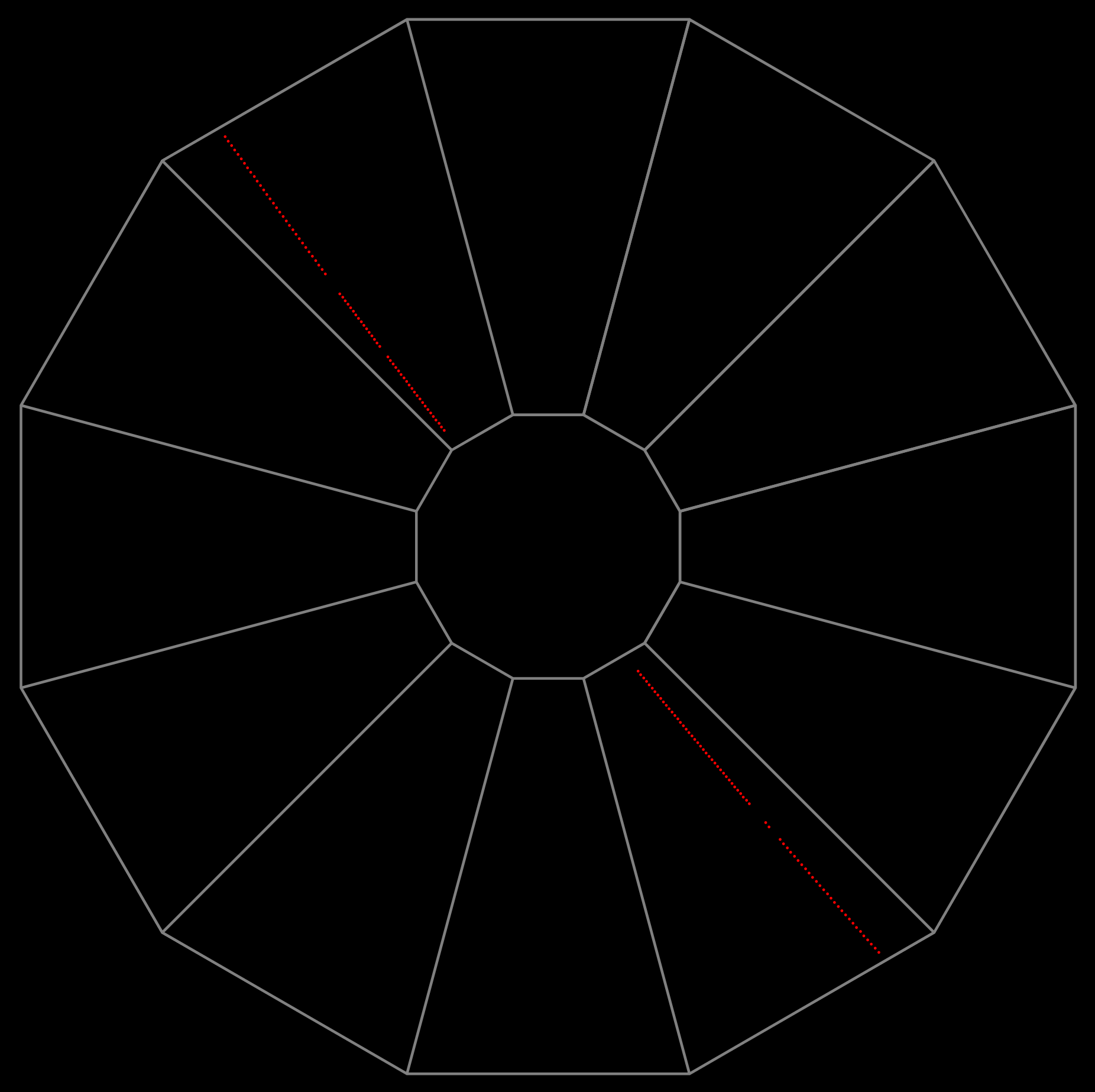
- For pT resolution I took events with two tracks;
- To avoid degradation of resolution on sector crossing both tracks were required to be fully inside a sector;
- I looked at pT resolution before and after the new alignment.
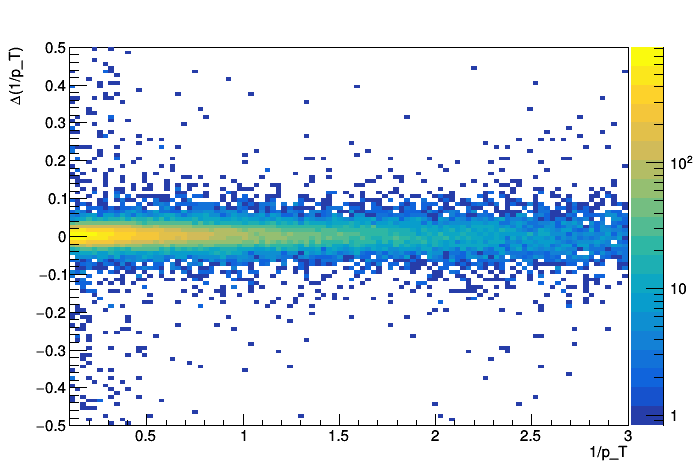
- Investigated pT range is only down to 300 MeV - because for lower momenta the chances for having only two tracks in an event are very low;
- However, this is an "integrated approach" and is affected by every missing FEE and RDO;
- Result: σpT ~ 0.008;
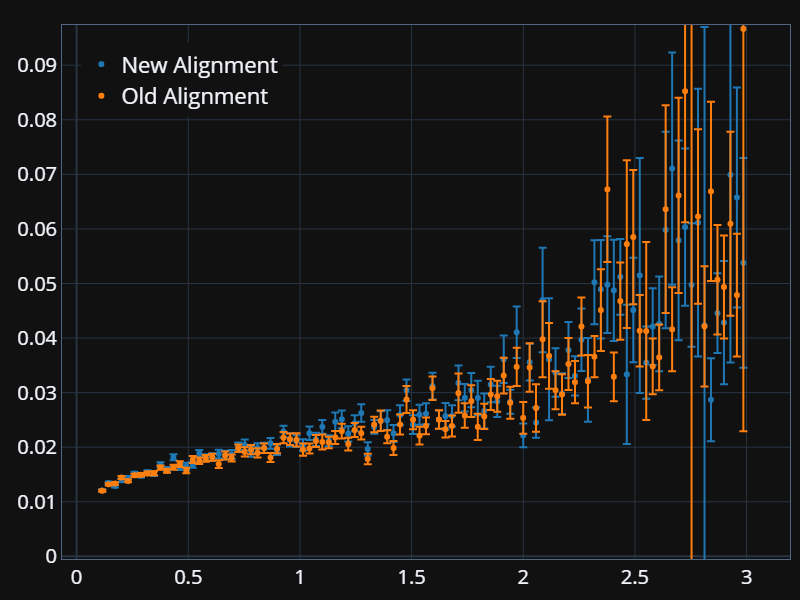
dE/dx issue
- This year live QA of the reconstructed data was setup up;
- Run-19 dE/dx calibration was commited on April 28th and an issues were caugth by the QA;
- This was investigated timely and fixed during the run;
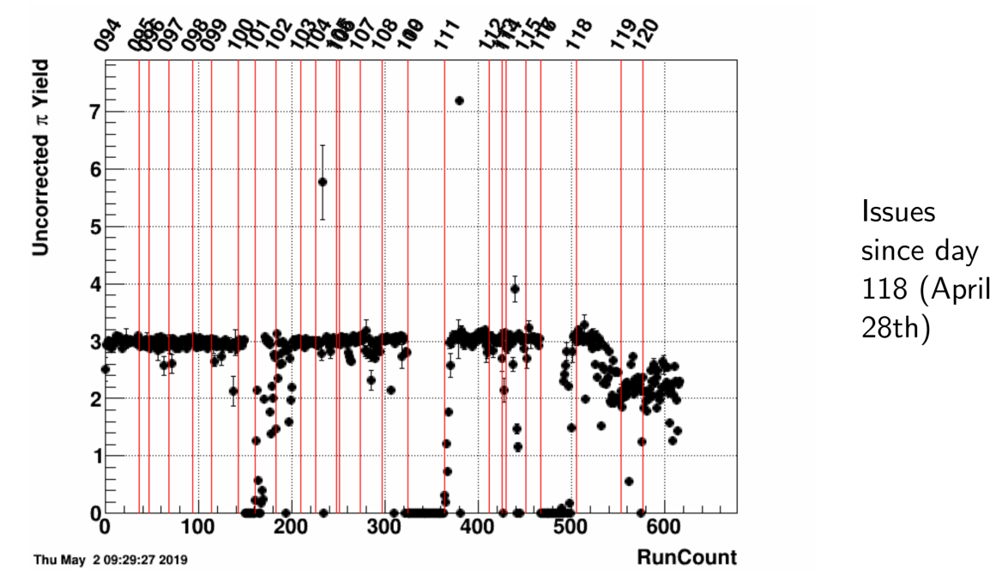

- iTPC comes with a new electronics chip - SAMPA;
- Current setup for the SAMPA is same as for the ALTRO chips;
- Important aspect of the TpcRS is its hit propagation through the P10 gas;
- To quintify this we look at the pixel separation from hit in a given cluster
- In 2018 we had both TPC and iTPC sectors so that is a good opportunity to have cross-comparison;
- We checked the simulation comparison to data by keeping the same simulation parameters in inner and outer sectors;
- First order result - iTPC shows qualitatively similar agreement to data as outer TPC.
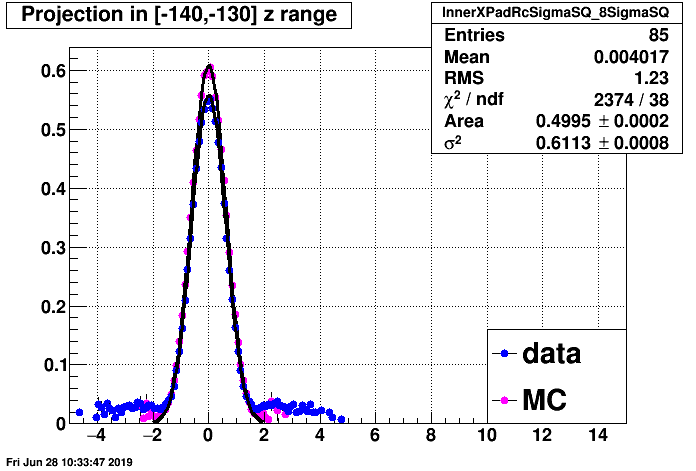
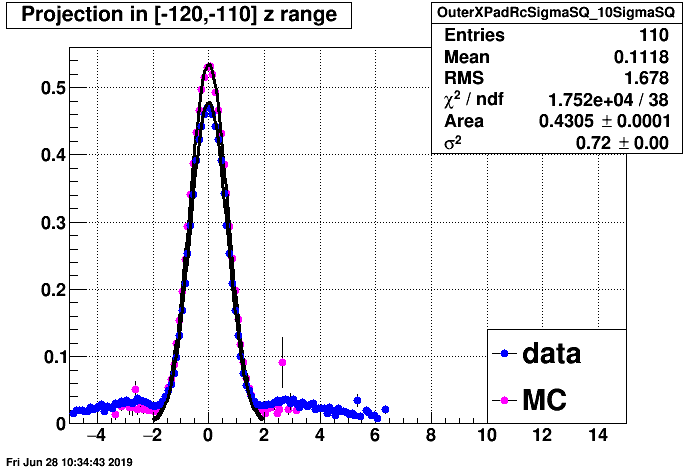
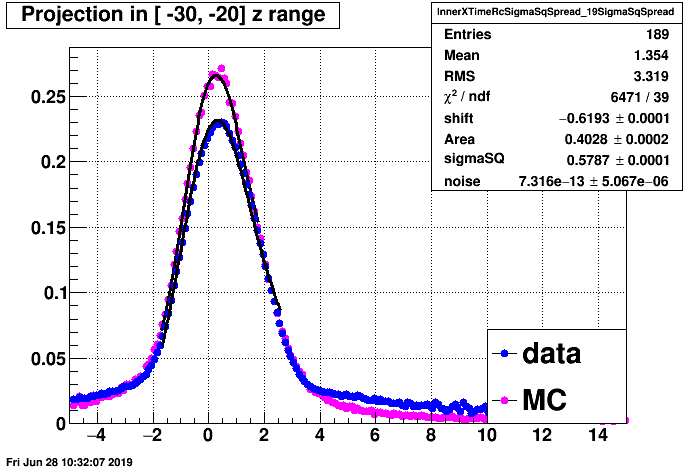
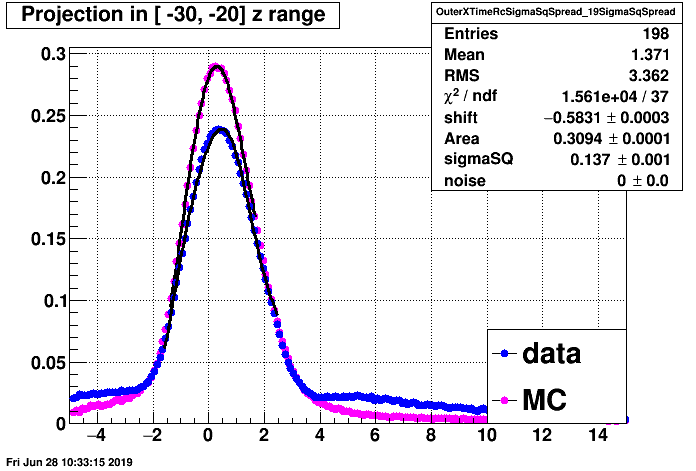
- Run-19 started the BES-II = low energy runs = wider bunches;
- FXT runs have shown some issues that indicated perhaps wrong TPC timing - T0;
- So we looked at the T0 by looking at the reconstructed vertex from hits only on east side of the TPC and only on west side of the TPC.
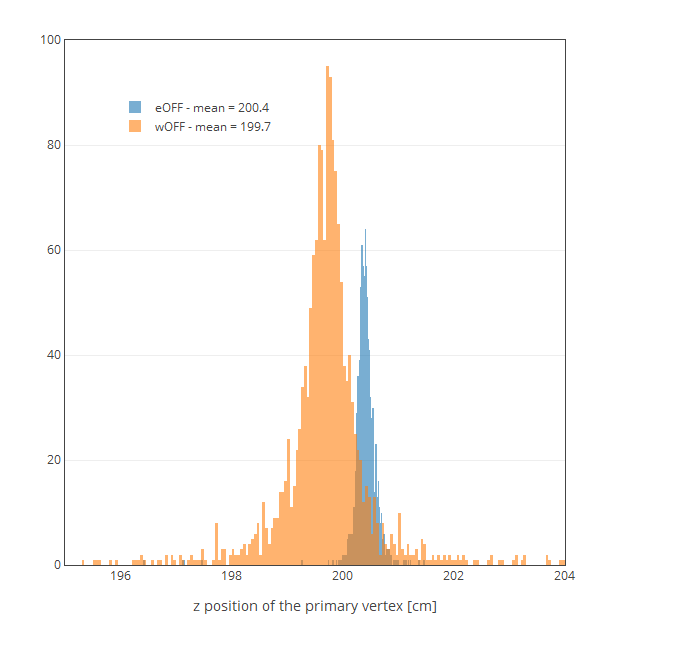
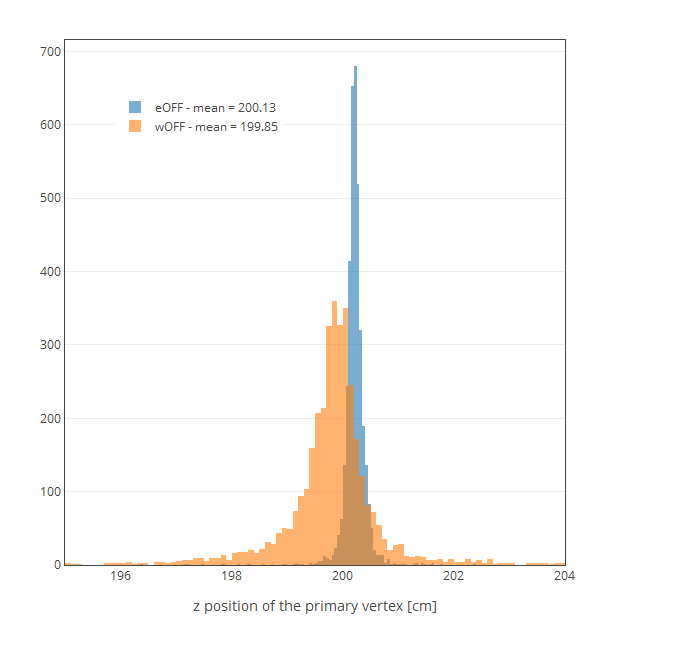
- The setup for STAR for the FXT is such that the global timing is set for the collision mode of that energy and is kept for the FXT mode of that energy;
- This introduces the 2m / c = ~7ns shift in timing, which should give about 0.7 mm in vertex separation;
- We see about 5 times larger separation which means there is additional distance, perhaps, due to the collision happening not in the middle of the bunch;
- This idea was tested, having in mind that EPD is a good candidate to provide timing for the collision;
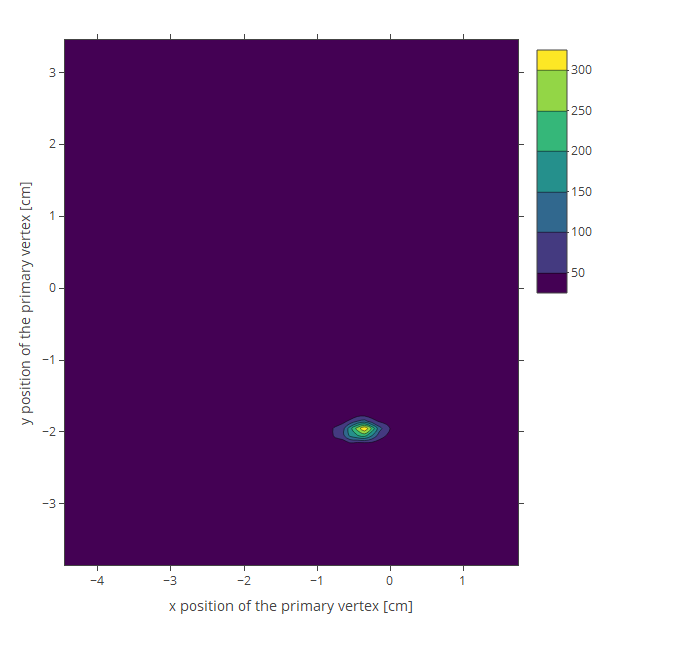
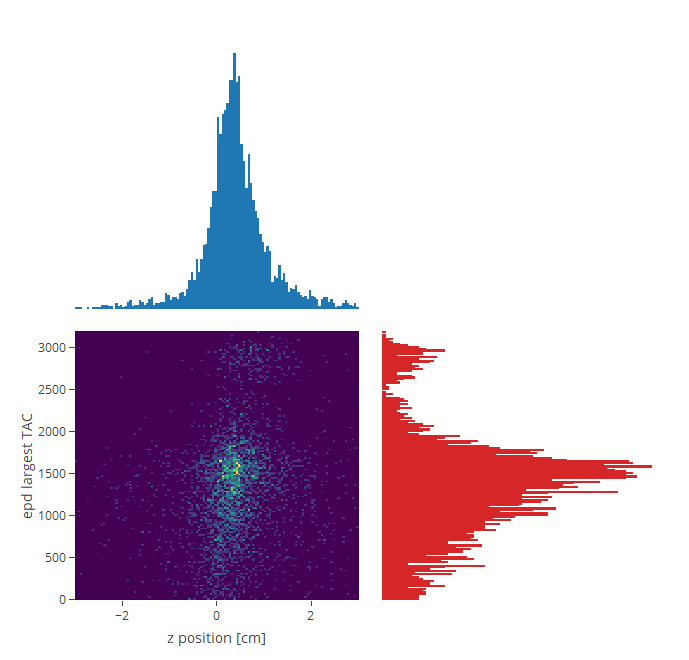
- There is a certain correlation between the firts hit (highest TAC) of epd and the z separation of the vertices;
- Thus EPD timing could be used to correct the TPC T0 event-by-event bases;
- Implementaion part should happen soon.
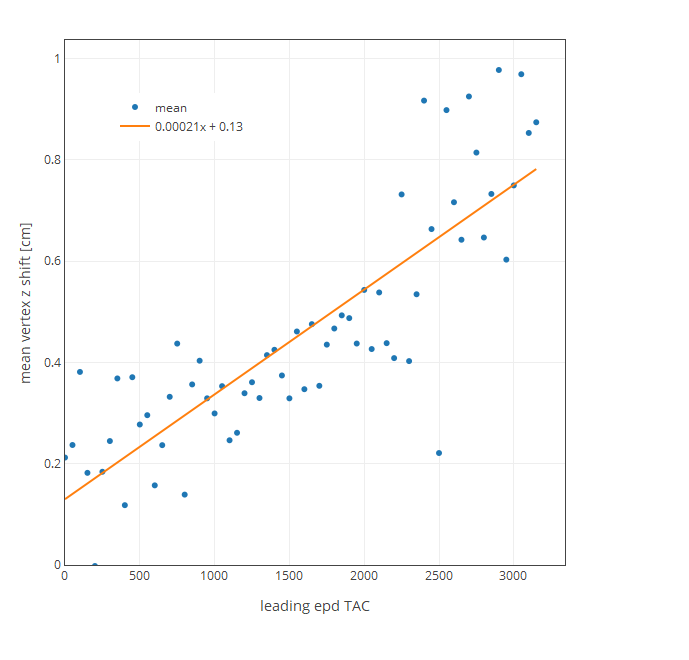

- Looking at the same correlation for the sihft in x and y direction to make sure it does not somehow come just from reconstruction from two sides of the TPC;
- Also looked at the residuls for the hits - which needs further investigation to be fully understood;
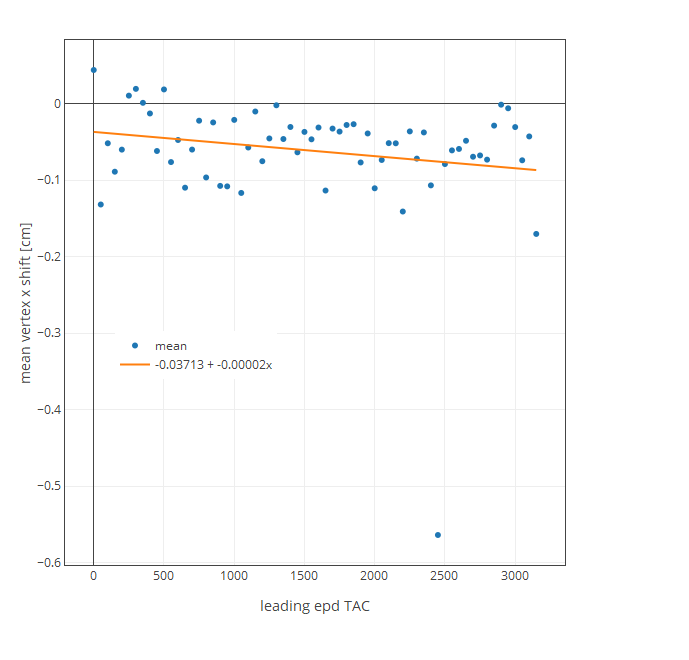
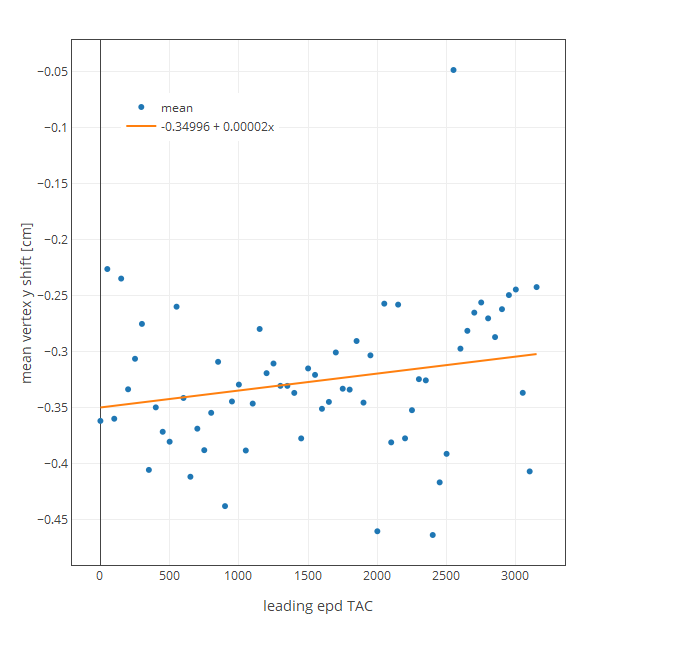
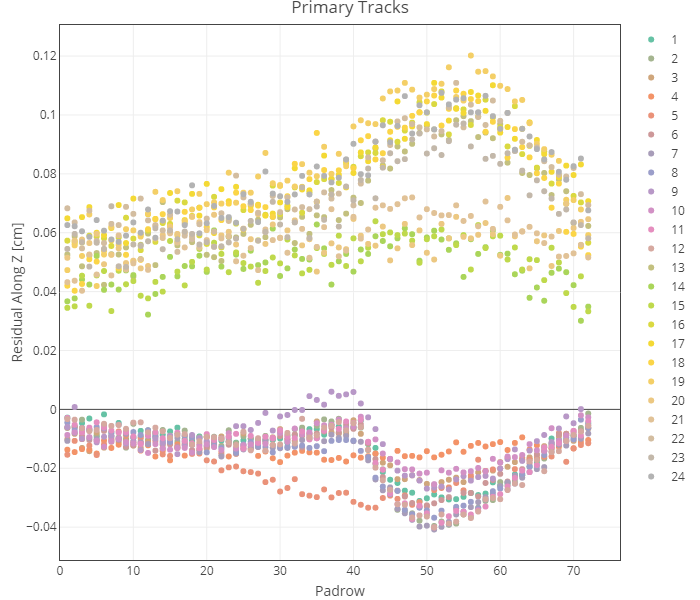
- Looking if EPD had reliable TAC data for Run 2018;
- Looking if simply fixed 200 cm / c correction is enough for the Run-18 due to the smaller bunch size;
- We understand that this is a priority at the moment;
- With ever widening bunch size and vertex acceptance this may need to be concidered not just for FXT but for collisions as well.
- TPC reconstruction and simulation is part of the STAR software mainframe;
- Ample amount of cosmics data was taken to properly do alignment and study resolution;
- Simulation was tuned and checked (to some degree) to be satisfactory;
- FXT in low energy Run-19 revealed the issues with event timing and is being worked on to be solved as broadly as possible;
- Many other tasks are ongoing within TPC group, so stay tunes